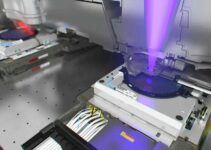General Motors sees the biggest revenue opportunities from software and services that go beyond what vehicles offer today, rather than charging for features such as heated seats that customers already expect, CEO Mary Barra said Friday.
Such software and services represent a major growth opportunity for GM, particularly as they extend beyond a vehicle’s first owner, Barra said at a Bernstein investor conference Friday. She said the automaker has learned from its OnStar safety and connectivity service what consumers are willing to pay for and what they expect to be in the vehicle.
GM has seen a willingness for “something that’s above and beyond,” Barra said, citing examples such as safety and security services, in-vehicle wireless hotspot capability or vehicle customization.
“If I buy my vehicle today and two years from now, there’s something that’s been invented that’s new, or a new service or a new feature, people are willing to pay for that. And so I think there’s a lot of opportunity,” she said. “The team’s already done a lot of work. We’ve done a lot of research in understanding what the consumer will pay for and what they won’t.”
Some automakers, including BMW, have upset customers by instituting monthly fees in overseas markets to activate built-in features such as heated seats.
GM has said software and services could generate as much as $25 billion in revenue by 2030. The automaker recently hired Mike Abbott, who led cloud services at Apple Inc., to be its executive vice president of software in charge of a reorganized team focused on information and digital technology, software-defined vehicle and operating systems, and digital business.
Barra said Friday that Abbott’s hiring is an example of GM “bringing outside talent that has experience in that space” as the automaker works on the transition.
GM is not alone in the pursuit of software applications and recurring subscription features that can bring in additional revenue beyond the initial sale of the vehicle. Ford Motor Co. said it has roughly 600,000 customers paying for subscription services: 400,000 for its Ford Pro commercial unit and 200,000 for its BlueCruise hands-free driver-assist system.
The 400,000 Ford Pro subscriptions represent a 60 percent increase from a year ago, and Ford Pro expects that number to triple by 2026.
“The software and services piece of that allows for a very different margin structure, allows for a longer relationship with the customer — the customer for the life of the vehicle,” Barra said. “The average age of a vehicle in the United States is now over 12 years. And so you want that first, second, third customer and that connectivity. You can get it. And that’s why we’ve made some decisions. We want to own the relationship with the customer.”
Barra also said Friday that Cruise, the self-driving technology company majority owned by GM, has begun testing the Origin vehicle in Austin, Texas.
Cruise is preparing for a rapid growth phase, with plans to expand its current service and enter more markets beyond San Francisco, Austin and Phoenix. The company said last month that it will begin operations in Houston and Dallas. CEO Kyle Vogt has said Cruise is on track or ahead of its goal to achieve $1 billion in revenue by 2025.
Cruise also is preparing for volume production of the Origin, an autonomous vehicle with no steering wheel or pedals, at GM’s Factory Zero in Detroit.
“We have more demand for rides than we have vehicles. That’s why we keep expanding the fleet. That’s why getting the Origin out there is so important,” Barra said. “That testing is going well in Austin, and it’s a game-changer. So we’ve got a plan already ready to build and scale those vehicles.”
